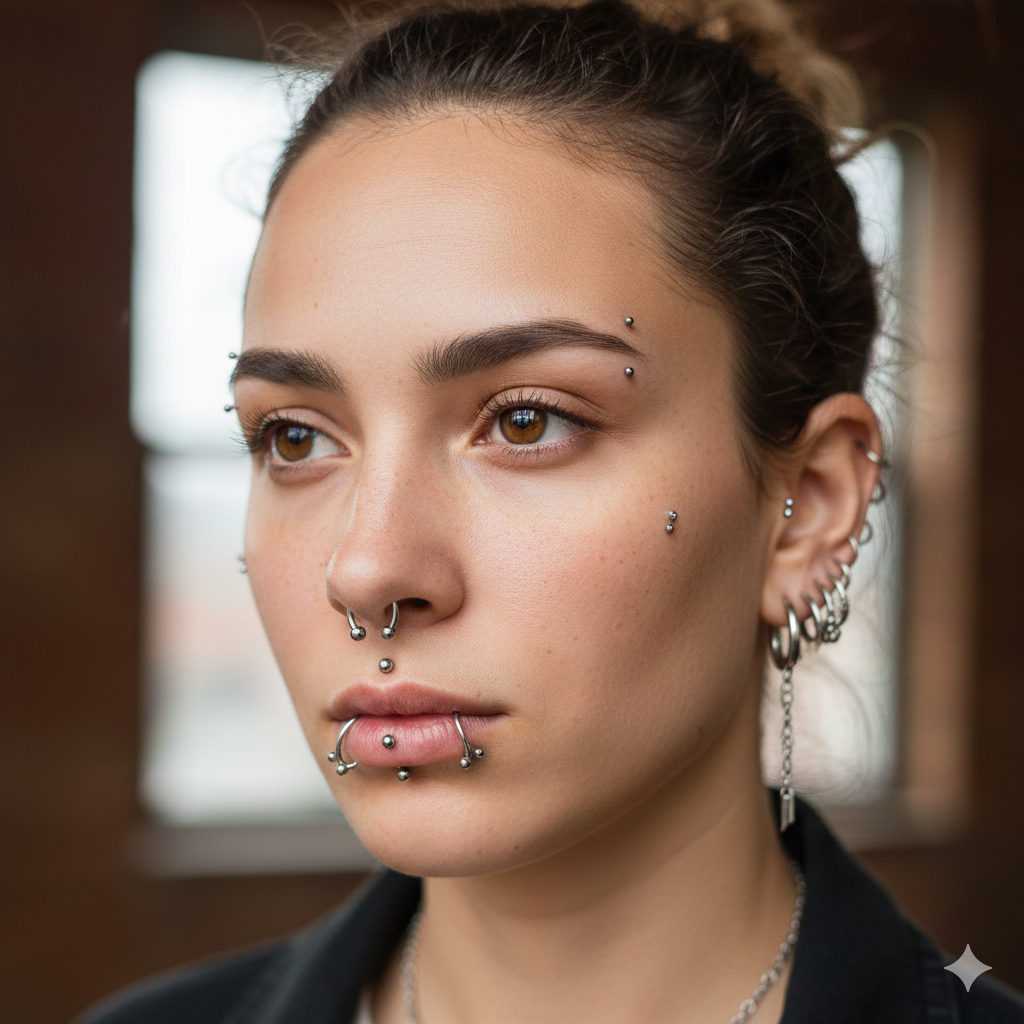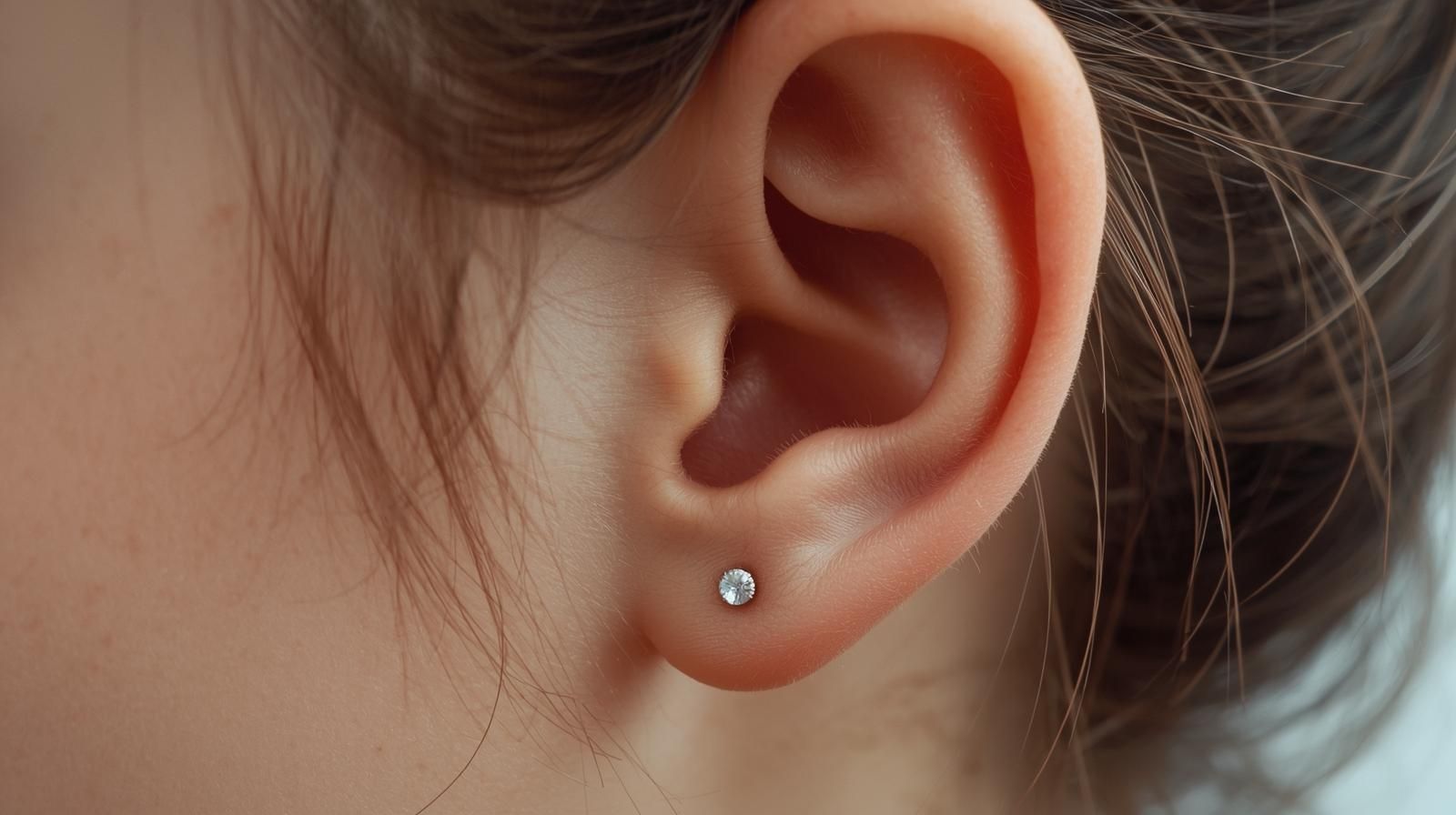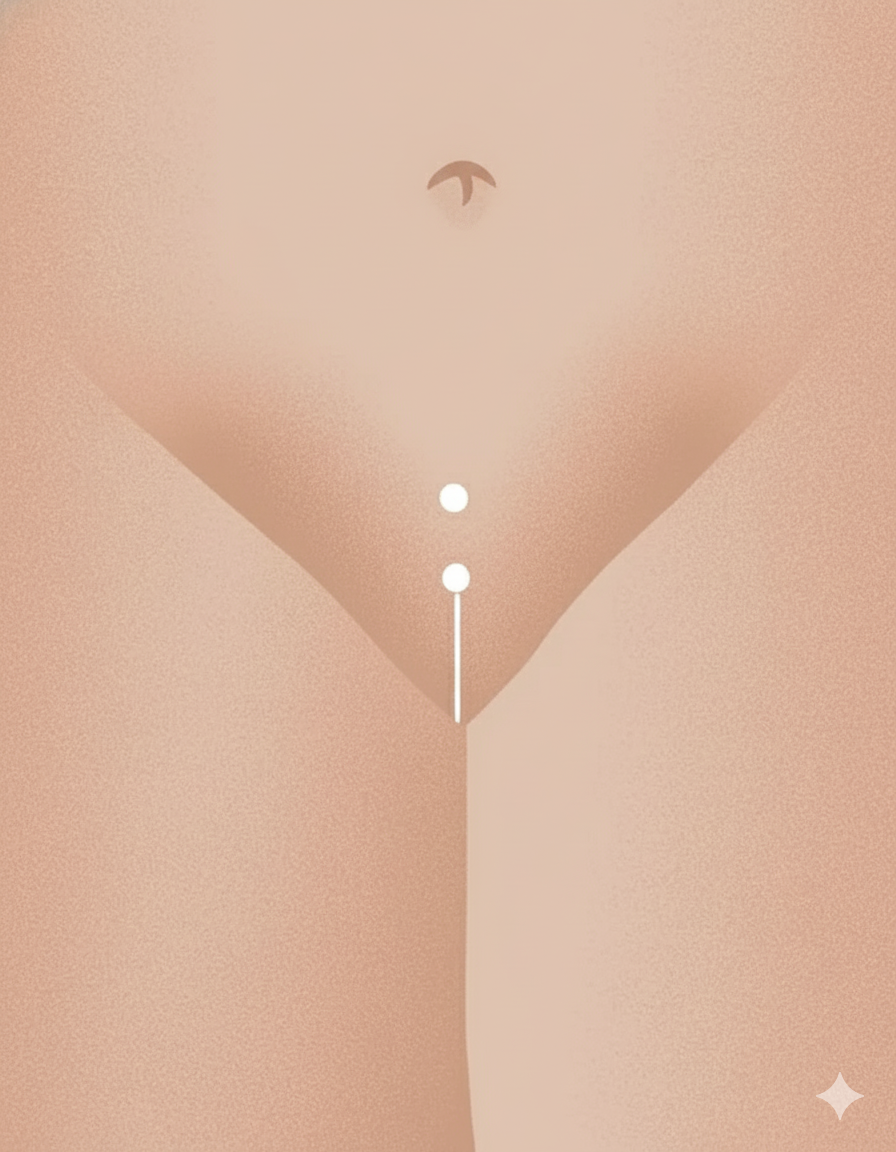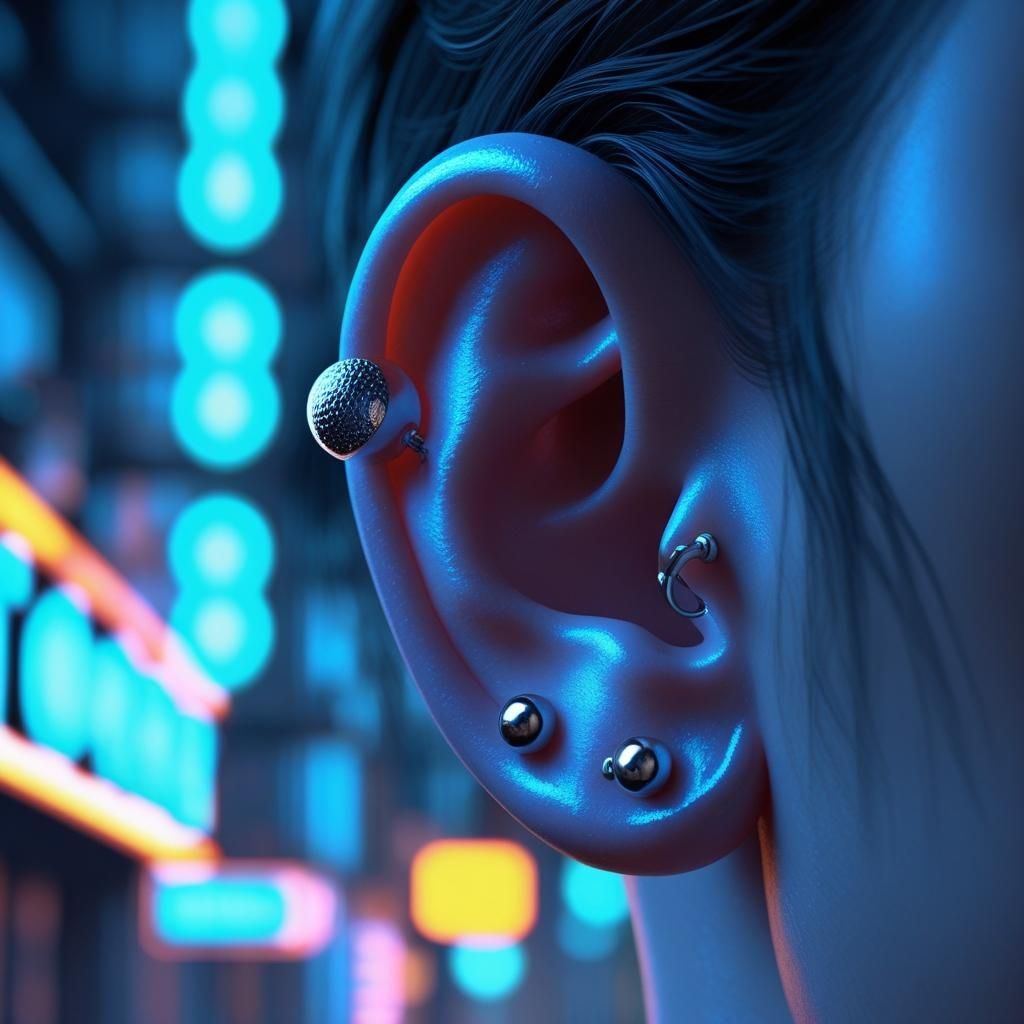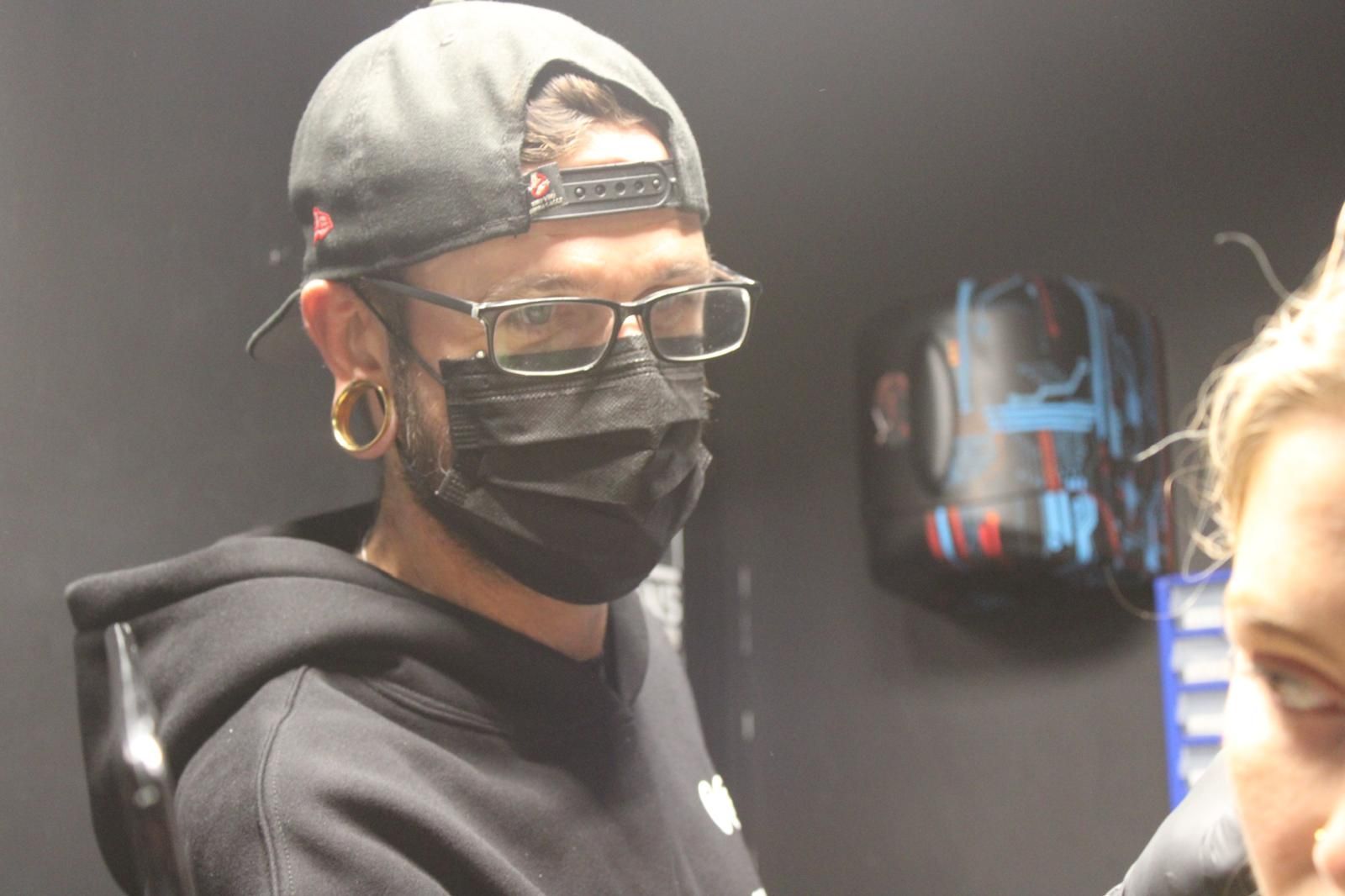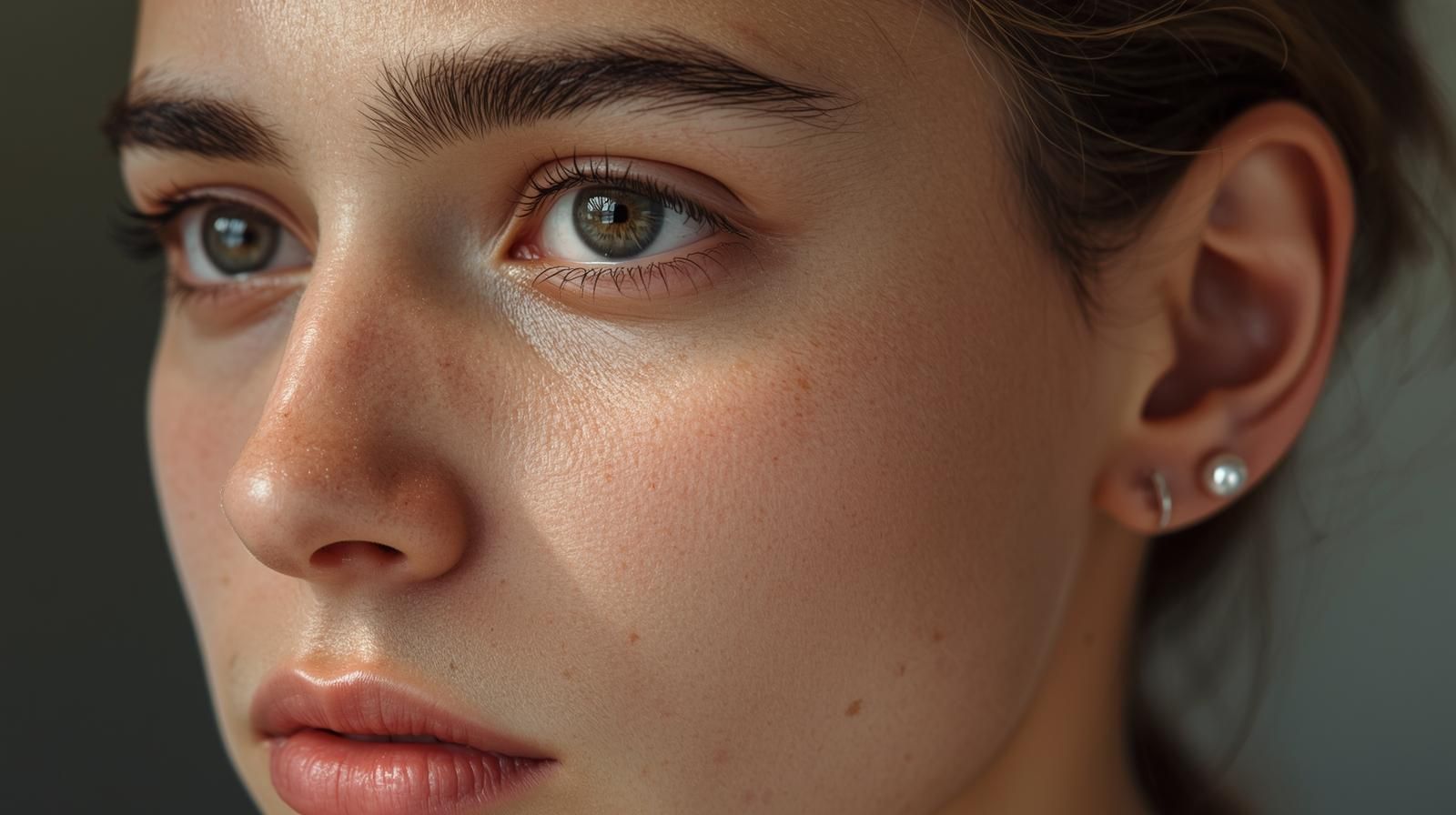Daith Piercing
Everything You Need to Know About Daith Piercing
€35
Table of Contents
- Introduction
- What is a Daith Piercing?
- The Process of Getting a Daith Piercing
- Preparation
- The Piercing Procedure
- Aftercare
- Benefits and Myths of Daith Piercing
- Choosing the Right Jewelry
- Common Issues and Troubleshooting
- FAQ
- Conclusion
Introduction
Daith piercing has surged in popularity, captivating individuals for its unique aesthetic appeal and purported health benefits. Situated in the innermost cartilage fold of the ear, this piercing stands out for its distinctive look and has become a topic of interest due to claims of migraine relief. Despite limited scientific validation for these health benefits, the piercing remains favored for both its visual impact and potential therapeutic effects. This guide aims to equip you with comprehensive knowledge about obtaining a daith piercing, the essential aftercare, and how to select the optimal jewelry to enhance your new ear adornment.
What is a Daith Piercing?
A daith piercing is located on the innermost cartilage fold of the ear, specifically the helix crus, just above the ear canal. This strategic placement allows for a prominent yet subtle jewelry display. While primarily sought for its avant-garde fashion appeal, some individuals pursue daith piercings in hopes of alleviating chronic migraines. Although anecdotal evidence from enthusiasts suggests benefits, scientific studies have yet to confirm these effects. Nevertheless, the allure of daith piercings continues to grow, driven by personal testimonials and the striking aesthetic they offer.
The Process of Getting a Daith Piercing
Preparation
Proper preparation is essential to ensure a smooth and successful daith piercing experience. Here are detailed steps to consider:
- Research Piercing Studios: Selecting a reputable piercing studio is critical. Look for establishments renowned for their stringent hygiene protocols and experienced piercers. For example, Impulse BioWorks & Piercing in Dublin is highly regarded for its meticulous attention to detail and commitment to safety. Reading reviews and seeking recommendations can guide you to a trustworthy studio.
- Consultation: Before proceeding, schedule a consultation with your chosen piercer. This meeting provides an opportunity to address any concerns or questions you have about the piercing process. You can discuss the type of jewelry best suited for your anatomy, the expected healing timeline, and any potential risks involved. A thorough consultation helps set realistic expectations and ensures you're well-informed before proceeding.
- Health Considerations: It's crucial to be in optimal health before undergoing any piercing procedure. Avoid consuming alcohol and blood-thinning medications at least 24 hours before your appointment, as these can increase bleeding and complicate the process. If you have any underlying medical conditions, such as a bleeding disorder, consult your healthcare provider beforehand.
The Piercing Procedure
The actual procedure for a daith piercing is relatively quick, typically taking only a few minutes. Here’s a detailed breakdown:
- Sterilization: The process begins with the piercer thoroughly sterilizing the targeted ear area. This step is vital in preventing infections and ensuring a safe piercing experience.
- Marking the Spot: The piercer will mark the exact spot to be pierced using a surgical pen. This mark serves as a guide to ensure precision during the piercing.
- Piercing: Using a sterile, hollow needle, the piercer punctures the ear at the marked location. While the sensation can vary, most individuals report feeling a brief, sharp pinch due to the cartilage’s density.
- Jewelry Insertion: Once the piercing is complete, the chosen jewelry is carefully inserted into the new piercing. The piercer will ensure the jewelry is secure and positioned correctly, minimizing the risk of irritation.
Aftercare
Effective aftercare is crucial for promoting healing and preventing complications:
- Cleaning: Clean your daith piercing twice daily using a saline solution or a specialized piercing aftercare spray. This routine helps eliminate bacteria and debris, reducing the risk of infection.
- Avoid Touching: Refrain from touching or rotating the jewelry unnecessarily. Introducing bacteria through handling can lead to infection and prolong healing times.
- Monitor Healing: The healing period for a daith piercing can range from 3 to 9 months. Regularly monitor for signs of infection, such as persistent redness, swelling, or unusual discharge. If any of these symptoms occur, consult a professional piercer or healthcare provider promptly.
- Lifestyle Adjustments: During the healing process, it's advisable to avoid swimming in pools, hot tubs, or natural bodies of water, as they can introduce bacteria to the piercing site. Additionally, be mindful of your sleeping position to avoid pressure on the piercing.
Benefits and Myths of Daith Piercing
Daith piercings are often surrounded by a mix of benefits and misconceptions:
- Fashion Statement: As a unique form of body art, daith piercings provide a striking visual accent. Their placement within the ear’s intricate folds offers a discreet yet stylish appearance that complements various jewelry styles.
- Migraine Relief: Some individuals pursue daith piercings with the hope of experiencing migraine relief. While there are anecdotal reports of success, scientific research has yet to substantiate these claims. Those considering the piercing for this purpose should remain cautious and consult medical advice.
- Myths: Numerous myths surround daith piercings, particularly concerning their health benefits. It’s essential to approach such claims with a degree of skepticism and rely on credible sources when researching potential health effects.
- Placebo Effect: It's worth noting that any perceived relief from migraines could be attributed to the placebo effect, where belief in the treatment's efficacy results in perceived or actual improvement.
Choosing the Right Jewelry
Selecting the right jewelry for your daith piercing is crucial for both aesthetic appeal and overall health:
- Material: High-quality materials, such as titanium and surgical steel, are recommended to minimize allergic reactions and irritation. These materials are biocompatible and less likely to cause complications.
- Style: Popular jewelry styles for daith piercings include captive bead rings and seamless rings. Choose a style that aligns with your personal preferences and daily activities, ensuring it complements your ear’s anatomy.
- Size: Proper sizing is critical to prevent pressure or irritation. Your piercer will help determine the appropriate size for your daith piercing, ensuring a comfortable fit that supports healing.
- Jewelry Maintenance: Regularly check that the jewelry remains secure and clean it as part of your aftercare routine to prevent buildup of dirt or bacteria.
Common Issues and Troubleshooting
Despite careful preparation and aftercare, daith piercings can present challenges:
- Infection: If you notice severe redness, swelling, or discharge, seek advice from a professional piercer or healthcare provider. Prompt attention can prevent more serious complications.
- Jewelry Rejection: Occasionally, the body may reject jewelry, resulting in migration or discomfort. If this occurs, consult your piercer to assess the situation and discuss possible solutions, such as changing the jewelry material or size.
- Healing Complications: Extended healing times or the development of hypertrophic scarring can occur. Consistent aftercare and monitoring are essential in managing these issues and ensuring a successful healing process.
- Allergic Reactions: If you experience itching, redness, or a rash around the piercing site, it could indicate an allergic reaction to the jewelry material. Switching to a hypoallergenic option like titanium may alleviate these symptoms.
FAQ
Q: How painful is a daith piercing?
A: Pain levels vary among individuals, but most people describe the sensation as a brief pinch. Since the piercing involves cartilage, it may be slightly more uncomfortable than lobe piercings. Pain tolerance and individual anatomy can influence the experience.
Q: How much does a daith piercing cost?
A: At Impulse BioWorks & Piercing, a daith piercing costs €35. Prices may vary based on location, the studio’s reputation, and the jewelry selected.
Q: Can I change my daith piercing jewelry immediately?
A: It’s strongly advised to wait until the piercing has fully healed, which can take several months, before changing jewelry. Premature changes can disrupt healing and increase the risk of infection.
Q: Is it safe to get a daith piercing while pregnant?
A: Generally, it’s advised to avoid new piercings during pregnancy due to the increased risk of infection and potential healing complications. Hormonal changes can also affect the body’s response to new piercings.
Q: What should I do if my daith piercing gets infected?
A: If you suspect an infection, clean the area with a saline solution and avoid removing the jewelry, as this can close the piercing and trap the infection. Consult a professional piercer or healthcare provider for further guidance.
Conclusion
Daith piercings offer an intriguing blend of aesthetic appeal and potential health benefits, making them a captivating addition to any piercing collection. However, it’s vital to approach this body modification with informed expectations and a commitment to proper care. If you’re in Dublin, consider visiting Impulse BioWorks & Piercing for a professional experience that prioritizes precision, hygiene, and customer satisfaction. Thorough research and diligent aftercare are your best allies in ensuring a successful and rewarding piercing journey.

